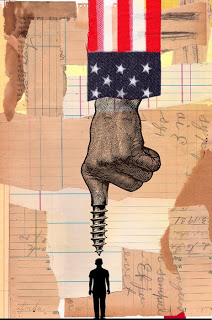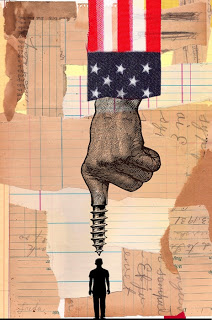 |
| Anthony Freda Illustration |
Bernd Debusmann, Op-Ed
Reuters
Optimism is so deeply embedded in the American national psyche that it withstood the Great Depression in the 1930s and a string of recessions since then. But in the era some economists call “the new normal” in America, optimism is fading.
So say public opinion polls that ask Americans how they see the future, theirs and their country’s. One recent survey, by the respected Pew Research Center, found that depression era Americans were more optimistic about economic recovery in the near future than people questioned in a Pew poll this October, when only 35 percent said they expected better economic conditions in a year’s time. In response to a similar question in 1936 and 1937, about half expected general business conditions to improve over the next six months.
The phrase “new normal” was coined by PIMCO, one of the world’s biggest investment funds, and is shorthand for an American future that includes lowered living standards, slow growth and high unemployment. Joblessness now stands at 9.8 percent, up from 9.6 percent in October. Add workers who have given up looking for jobs and people forced to work part time and the rate climbs to 17 percent, a powerful reason for declining optimism.
But it’s not the only one. A slew of studies, surveys and reports show that a growing number of Americans – some surveys say more than half – no longer believe that their country is a land of unlimited opportunity, where all it takes to rise to success is hard work and determination.
“The end of American optimism,” as a headline over an opinion piece in the Wall Street Journal proclaimed this summer, has not quite arrived. But Americans increasingly believe that the rich just get richer and the poor just get poorer. They have good reason to think so. The rich-poor gap in the United States is wider than in any other developed country.
That has rarely been a matter of concern for most Americans but the recession that began in December 2007 turned inequality into a topic of public debate, on occasion with peculiar twists.
In November, a widely-read New York Times columnist, Nicholas Kristof, compared the United States to Latin American banana republics. To see countries where the richest one percent take home more than a fifth of the national income, he said, it was no longer necessary to leave the U.S.
RELATED ARTICLES:
10 Signs The U.S. Is Becoming a Third World Country
5 Best Countries to Escape America’s Decline


Be the first to comment on "Fading optimism in “new normal” America"